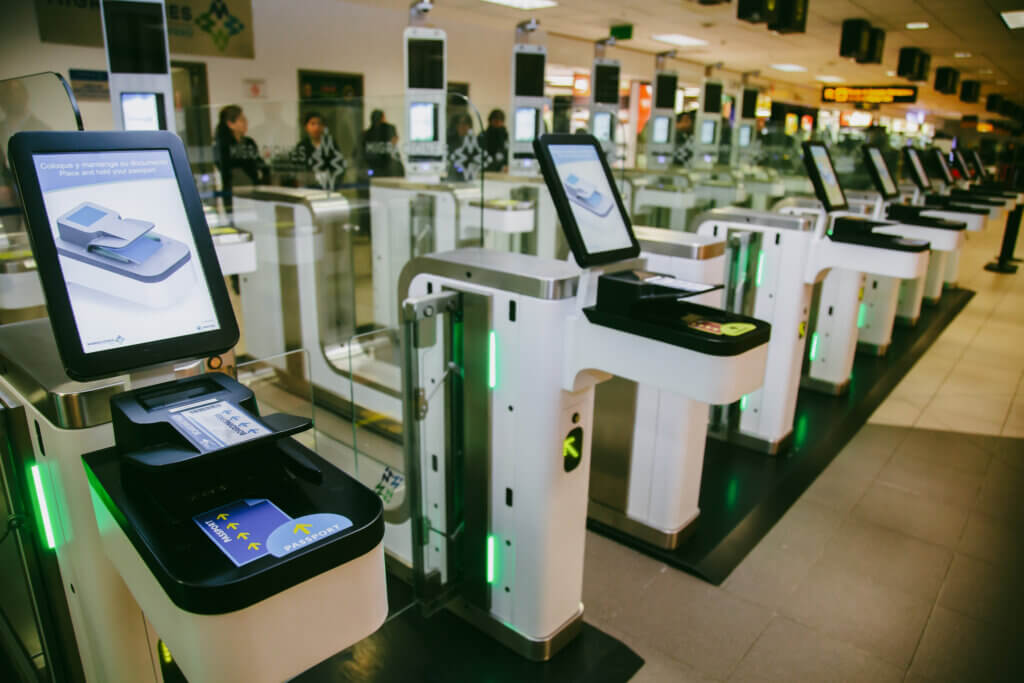The European Union (EU) is set to revolutionise its border management with the introduction of the Entry/Exit System (EES). Expected to roll out October 20251. This new system marks a major shift in the way non-EU nationals enter and exit the Schengen Area. For frequent business travellers, understanding how the EES works – and its potential impact on travel routines – will be crucial for minimising disruptions.
What is the Entry/Exit System (EES)?
The EES is a central component of the EU’s broader Smart Borders initiative. Aimed at improving security and streamlining border management. The system is designed to digitally record the entry and exit of non-EU travellers when crossing Schengen borders. It will replace manual passport stamping with an automated process. Making the movement of people into and out of the Schengen Area more efficient and transparent.
At its core, the EES will:
- Record biometric data such as fingerprints and facial images for non-EU travellers
- Log entry and exit dates for non-EU nationals travelling into or out of Schengen countries
- Track visa overstays and alert authorities if a traveller has exceeded their permitted stay
The system applies to short-term stays within the Schengen Zone (up to 90 days within a 180-day period), which includes a large portion of business travellers entering the region.
How the EES affects business travellers?
While the EES is designed to strengthen security and reduce illegal immigration, it will also have significant implications for non-EU business travellers. Below are some of the key ways in which the EES will impact those travelling for work purposes.
1. Faster border crossings – with preparation
The transition from manual passport checks and stamping to biometric identification should make border crossings faster and more efficient in the long term. However, travellers should be prepared for initial delays, especially in the early stages of implementation.
Travellers entering or leaving the EU will now be required to undergo biometric scans (fingerprints and facial recognition), and their data will be stored in the central EES database. While this adds a new layer to the border crossing process, it is expected to speed up repeat visits by enabling smoother automated checks at electronic gates.
2. Monitoring of short-stay limits
For business travellers who frequently enter the Schengen Area for meetings, conferences, or client visits, the 90-day limit within a 180-day period is a critical factor. The EES will automatically track these limits, making it harder to accidentally overstay. Previously, manual passport stamps were used to track this, which sometimes led to errors or difficulties in calculating the remaining days.
Now, the system will calculate the duration of stay in real time, ensuring that travellers do not exceed the permitted period. This brings clarity but also adds pressure on businesses and individuals to monitor travel schedules more precisely.
3. Increased scrutiny on visa overstays
One of the primary goals of the EES is to reduce visa overstays, which have been a persistent challenge for EU authorities. For business travellers, this means greater scrutiny and less room for error. If you overstay, even by a small margin, the EES will automatically flag the violation, potentially leading to penalties or even entry bans in the future.
This stricter enforcement could require businesses to be more cautious when arranging travel for employees, ensuring all trips are well within legal limits.
4. Privacy concerns & data security
Business travellers may also be concerned about how their biometric data is stored and protected. The EES will collect sensitive information such as fingerprints and facial images, and this data will be kept for several years. Although the system will adhere to stringent EU data protection regulations (including the General Data Protection Regulation, or GDPR), some travellers may still feel uneasy about the increased surveillance.
It’s advisable for businesses to educate employees about the security measures in place and assure them that their data will be used strictly for border control purposes.
Preparing for the EES: What can business travellers do?
To ensure smooth and hassle-free travel under the new EES framework, businesses and their travelling employees should take the following steps:
1. Familiarise yourself with EES procedures
Knowing what to expect at the border can help reduce stress and avoid delays. Travellers should understand the biometric procedures and ensure they have valid travel documents.
2. Plan short stays carefully
The EES will make it easier to track days spent within the Schengen Area, but businesses should still plan trips carefully to avoid overstays. Keeping track of travel dates and being mindful of the 90-day rule will be essential.
3. Use automated systems where possible
Whenever available, use automated border gates that are integrated with the EES system. This will speed up the entry/exit process and ensure that data is recorded accurately.

4. Ensure compliance with visa requirements
For travellers requiring visas, the EES will further enforce compliance. Make sure visa applications are submitted on time, and that travellers hold valid permits for their intended duration of stay.
5. Update corporate travel policies
Businesses should review and update their travel policies to reflect the introduction of the EES. This includes informing employees about the system, providing guidance on how to comply, and adjusting travel planning processes to accommodate potential changes at the border.
The bigger picture: A smarter, more secure border
The introduction of the EES marks a significant step forward in the EU’s efforts to modernise border controls. For business travellers, the system promises smoother crossings in the long run, along with greater clarity and transparency regarding travel limits. However, the initial adjustment period may come with challenges, including longer wait times and stricter monitoring of short-stay rules.
As the EES is rolled out, businesses and their travelling employees must stay informed and adaptable to minimize disruptions and ensure that they remain compliant with the new regulations. The result will be a more efficient, secure, and reliable border control experience, ultimately supporting the free flow of legitimate business travel across the Schengen Area.
Conclusion
The EU’s new Entry/Exit System is a bold step toward smarter borders, but for business travellers, it will require preparation, compliance, and vigilance. Embrace the change by staying ahead of the curve – so your next business trip runs as smoothly as possible.
MIDAS Travel supports clients with navigating new travel initiatives, ensuring they are prepared and compliant. To talk to us about managing your travel programme, then get in touch.
USEFUL LINKS
- What does a great business travel policy look like? – MIDAS Travel Blog
- Why work with us? – MIDAS Travel Website
- Entry/Exit System (EES) Home – European Union Website
Footnotes
- EU Entry/Exit System Guide, Government Website ↩︎


One Response